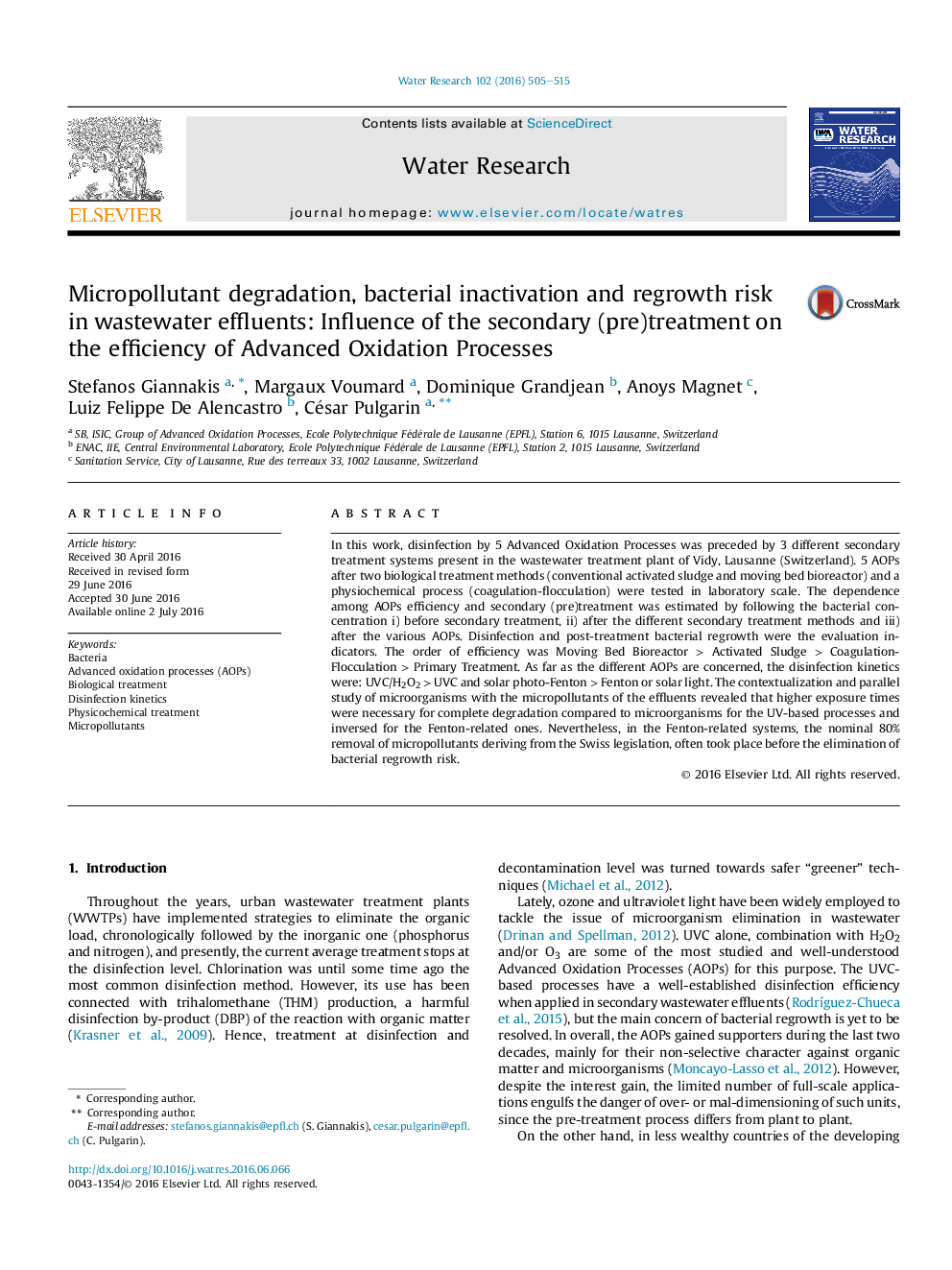| کد مقاله | کد نشریه | سال انتشار | مقاله انگلیسی | نسخه تمام متن |
|---|---|---|---|---|
| 4480881 | 1623066 | 2016 | 11 صفحه PDF | دانلود رایگان |
• 5 Advanced Oxidation Processes were applied after 3 secondary treatment systems.
• Microbiological and 8 chemical micro-contaminants were targeted in matrix-related tests.
• Micropollutant degradation, bacterial inactivation & regrowth were assessed after treatment.
• Biologically treated effluents combined with UV-based AOPs achieved total decontamination.
• Issues among the targets and their relationship with the AOP applied were discussed.
In this work, disinfection by 5 Advanced Oxidation Processes was preceded by 3 different secondary treatment systems present in the wastewater treatment plant of Vidy, Lausanne (Switzerland). 5 AOPs after two biological treatment methods (conventional activated sludge and moving bed bioreactor) and a physiochemical process (coagulation-flocculation) were tested in laboratory scale. The dependence among AOPs efficiency and secondary (pre)treatment was estimated by following the bacterial concentration i) before secondary treatment, ii) after the different secondary treatment methods and iii) after the various AOPs. Disinfection and post-treatment bacterial regrowth were the evaluation indicators. The order of efficiency was Moving Bed Bioreactor > Activated Sludge > Coagulation-Flocculation > Primary Treatment. As far as the different AOPs are concerned, the disinfection kinetics were: UVC/H2O2 > UVC and solar photo-Fenton > Fenton or solar light. The contextualization and parallel study of microorganisms with the micropollutants of the effluents revealed that higher exposure times were necessary for complete degradation compared to microorganisms for the UV-based processes and inversed for the Fenton-related ones. Nevertheless, in the Fenton-related systems, the nominal 80% removal of micropollutants deriving from the Swiss legislation, often took place before the elimination of bacterial regrowth risk.
Figure optionsDownload high-quality image (226 K)Download as PowerPoint slide
Journal: Water Research - Volume 102, 1 October 2016, Pages 505–515
